
Read about our planets below!

The Sun, a dazzling ball of hot, ionized gas, is the
gravitational center of our solar system and the source
of life-sustaining energy for Earth. Composed primarily
of hydrogen and helium, the Sun's core experiences
immense pressure and temperatures exceeding 15 million
degrees Celsius (27 million degrees Fahrenheit), where
nuclear fusion reactions convert hydrogen into helium,
releasing an astonishing amount of energy in the
process. This energy then radiates outward, creating the
Sun's intense heat and light that bathe the entire solar
system. The Sun's surface, known as the photosphere, is
marked by granules and sunspots—temporary cooler regions
caused by magnetic activity.
Beyond its vital role in sustaining life through
photosynthesis and providing warmth, the Sun also
influences the space surrounding it. The solar wind, a
continuous stream of charged particles, flows outward,
shaping the heliosphere and interacting with the
magnetic fields of planets. Solar flares and coronal
mass ejections, explosive releases of energy, can impact
Earth's magnetosphere, leading to dazzling displays of
the auroras but also potentially disrupting satellite
communications and power grids. Understanding the Sun's
dynamics is crucial for comprehending the broader
workings of our solar system and the complex interplay
between celestial bodies and their parent star.
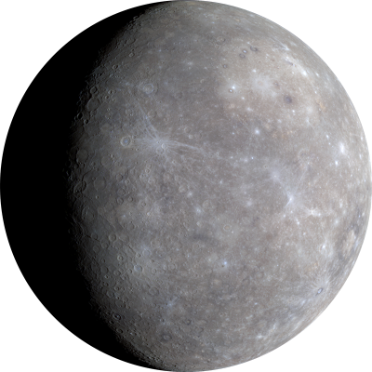
Mercury, the smallest and closest planet to the Sun in
our solar system, is a fascinating celestial body
characterized by extreme conditions. With a diameter of
just 4,880 kilometers, it is only slightly larger than
Earth's Moon.Mercury's proximity to the Sun results in a
scorching surface temperature that can reach up to 430
degrees Celsius (800 degrees Fahrenheit) during the day,
while its nights plunge to a frigid -180 degrees Celsius
(-290 degrees Fahrenheit) due to the lack of a
substantial atmosphere to retain heat. The planet's
surface is a rocky and barren expanse, marked by
expansive plains, deep craters, and towering cliffs.
Despite its harsh environment, Mercury has been a
subject of scientific intrigue, and several space
missions have been launched to explore its mysteries.
One of the peculiarities of Mercury is its slow rotation
on its axis, taking approximately 59 Earth days to
complete a single rotation and 88 Earth days to complete
an orbit around the Sun. This results in a unique
pattern where one day on Mercury (from sunrise to
sunrise) is longer than its year (the time it takes to
complete one orbit around the Sun). The lack of a
substantial atmosphere contributes to the absence of
weather phenomena, and the planet's surface has been
sculpted by the impact of countless asteroids and comets
over the eons. Despite its proximity to Earth, much
about Mercury remains unknown, making it a compelling
target for future scientific exploration.
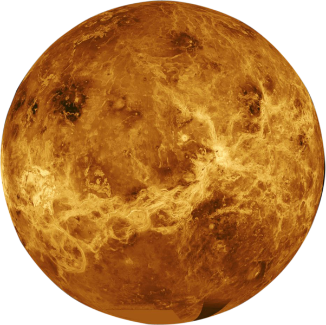
Venus, often referred to as Earth's "sister planet" due
to its similar size and composition, is a mysterious and
inhospitable world. Cloaked in a thick atmosphere
primarily composed of carbon dioxide with clouds of
sulfuric acid, Venus experiences a runaway greenhouse
effect, trapping heat and resulting in surface
temperatures that can soar to a scorching 465 degrees
Celsius (869 degrees Fahrenheit)—hot enough to melt
lead. The planet's surface is obscured from direct view
by telescopes, leading early astronomers to envision a
tropical paradise. However, modern spacecraft missions,
such as NASA's Magellan, have revealed a harsh reality:
a rocky landscape marked by vast plains, highland
regions, and towering volcanoes, with a surface pressure
over 90 times that of Earth.
Venus also possesses a unique rotation pattern, with an
extremely slow and retrograde rotation on its axis,
meaning it rotates in the opposite direction to most
other planets, including Earth. A day on Venus, from one
sunrise to the next, is longer than its year, taking
about 117 Earth days. Despite its inhospitable
conditions, Venus remains a subject of scientific
interest, and missions like NASA's Parker Solar Probe
and the European Space Agency's EnVision aim to unravel
the mysteries of its atmosphere and geology, providing
valuable insights into the processes that shape rocky
planets within our solar system and beyond.
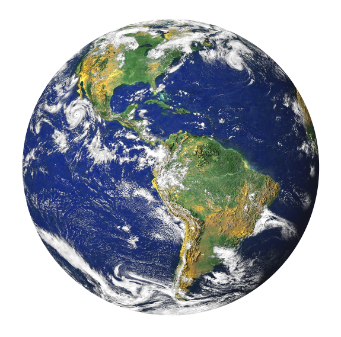
Earth, our home in the vast cosmos, is a planet teeming
with life and geological diversity. With a diameter of
about 12,742 kilometers, Earth is the third planet from
the Sun and the only known celestial body to support a
rich and varied ecosystem. Its atmosphere, primarily
composed of nitrogen and oxygen, facilitates life as we
know it, while the planet's dynamic geology has shaped
its surface over billions of years. Oceans, covering
approximately 71% of Earth's surface, play a crucial
role in regulating climate and fostering an abundance of
biodiversity. Landscapes vary from towering mountain
ranges to expansive deserts, lush rainforests, and polar
ice caps, highlighting the planet's geological
complexity.
The Earth's diverse climates and ecosystems have given
rise to a staggering array of life forms, from
microscopic organisms to complex organisms such as
humans. The interconnectedness of Earth's systems,
including the atmosphere, hydrosphere, geosphere, and
biosphere, sustains the delicate balance necessary for
life to thrive. As humanity grapples with environmental
challenges and strives for sustainable practices, the
importance of understanding and preserving the unique
characteristics of our planet has never been more
crucial. Earth stands as a testament to the
awe-inspiring complexity of the natural world and serves
as a reminder of our shared responsibility to protect
and steward the home we all inhabit.

Mars, often referred to as the "Red Planet," has
captivated human imagination for centuries with its
distinctive rusty hue and enigmatic features. This
fourth planet from the Sun is characterized by a thin
atmosphere primarily composed of carbon dioxide, with
surface temperatures that can range from a frigid -140
degrees Celsius (-220 degrees Fahrenheit) at the polar
ice caps to a milder but still chilly average of -63
degrees Celsius (-81 degrees Fahrenheit). Mars' surface
bears evidence of dynamic geological processes,
including vast valleys, towering volcanoes, and a giant
canyon system, exemplified by Valles Marineris, a rift
system that dwarfs the Grand Canyon on Earth.
Mars has been a focal point of exploration, with
numerous spacecraft and rovers sent to study its surface
and atmosphere. Recent missions, such as NASA's
Perseverance rover, aim to uncover clues about Mars'
past potential for life by studying ancient lakebeds and
collecting rock samples. The planet's two small moons,
Phobos and Deimos, add to its intrigue. As scientists
unravel the mysteries of Mars, it remains a key target
for future human exploration, with aspirations to
understand the planet's geology and potential
habitability, making it a stepping stone for humanity's
exploration of the cosmos.
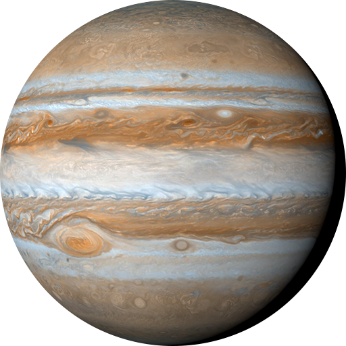
Jupiter, the largest planet in our solar system, is a
gas giant with a commanding presence. Composed mostly of
hydrogen and helium, Jupiter's immense mass is over two
and a half times greater than that of all the other
planets in the solar system combined. Its most iconic
feature is the Great Red Spot, a colossal storm that has
been raging for at least 350 years, possibly much
longer. This gigantic storm, which is larger than Earth
itself, is a testament to the dynamic and turbulent
atmosphere of Jupiter. The planet boasts a complex
system of colorful bands and zones, driven by powerful
atmospheric currents.
Jupiter's impressive size and gravitational influence
have played a crucial role in shaping the solar system.
Acting as a cosmic vacuum cleaner, its strong
gravitational pull has diverted or captured potentially
hazardous objects, protecting inner planets like Earth
from frequent asteroid and comet impacts. Jupiter's
retinue of over 80 moons includes the four largest,
known as the Galilean moons—Io, Europa, Ganymede, and
Callisto—each possessing unique characteristics and
geological features. As humanity continues to study this
gas giant through spacecraft missions like NASA's Juno,
Jupiter remains a celestial giant with profound
implications for our understanding of planetary
formation and dynamics.

Saturn, the second-largest planet in our solar system,
is renowned for its breathtaking ring system that
encircles the gas giant in a stunning display of cosmic
elegance. Composed primarily of hydrogen and helium,
Saturn's atmosphere exhibits a banded pattern similar to
Jupiter's, marked by alternating light and dark bands
driven by powerful jet streams. What truly sets Saturn
apart, however, is its magnificent ring system,
consisting of countless particles ranging from
microscopic ice crystals to boulders. These rings,
divided into several distinct bands, create a
mesmerizing visual spectacle and contribute to the
planet's celestial allure.
Saturn's rings, spanning an impressive 280,000
kilometers in diameter but only a few meters in
thickness, are not only a captivating feature but also a
dynamic field of study for scientists exploring the
mechanics of planetary ring systems. The planet is also
home to a diverse array of moons, each with its own
unique characteristics. Titan, Saturn's largest moon, is
of particular interest due to its thick atmosphere and
methane lakes, making it one of the most Earth-like
bodies in the outer solar system. As spacecraft like
NASA's Cassini continue to unveil the secrets of Saturn
and its moons, this gas giant stands as a celestial
marvel, enriching our understanding of the intricate
dynamics at play in our cosmic neighborhood.
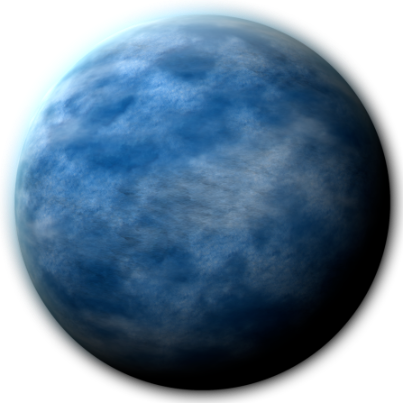
Uranus, the seventh planet from the Sun, stands out in
our solar system with its unique feature of rotating on
its side, essentially rolling through its orbit like a
colossal celestial ball. This unusual axial tilt of
nearly 98 degrees sets Uranus apart from the other
planets, giving it a distinct rotational orientation.
Comprising mostly hydrogen, helium, and methane, Uranus
possesses a blue-green hue due to the absorption and
scattering of sunlight by its atmosphere's methane
content. The planet's atmosphere is marked by a series
of faint bands and a subtle ring system, which was
discovered in 1977 by astronomers during a stellar
occultation.
Uranus is also recognized for its collection of 27 known
moons, with five major moons, including Titania and
Oberon, discovered by Voyager 2 during its flyby in
1986. The study of Uranus provides valuable insights
into the formation and evolution of our solar system, as
its peculiar axial tilt challenges existing models of
planetary formation. Despite its distant location and
limited exploration, Uranus remains a fascinating object
of scientific inquiry, offering a glimpse into the
diverse and enigmatic nature of our cosmic neighborhood.
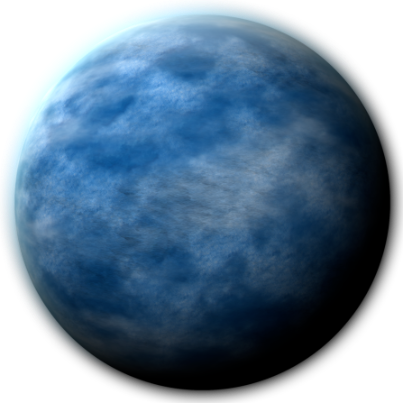
Neptune, the eighth and farthest planet from the Sun in
our solar system, is a distant giant marked by its deep
blue coloration and dynamic atmosphere. Composed
primarily of hydrogen, helium, and methane, Neptune's
atmosphere displays striking bands of clouds, high
winds, and the presence of the Great Dark Spot—a massive
storm system akin to Jupiter's Great Red Spot. This
planet experiences the strongest winds in the solar
system, with speeds reaching up to 2,100 kilometers per
hour (1,300 miles per hour). Despite being over 30 times
farther from the Sun than Earth, Neptune still receives
sunlight, though it is faint and contributes to its
chilly average temperature of approximately -214 degrees
Celsius (-353 degrees Fahrenheit).
Neptune's intriguing moon system includes Triton, a
notable moon with unique characteristics such as a
retrograde orbit, suggesting it may have been captured
by Neptune's gravitational pull. Triton's geysers spew
nitrogen gas into space, creating a dynamic and
ever-changing environment on this icy moon. As the last
of the gas giants in our solar system, Neptune continues
to be a target of scientific exploration, with missions
like Voyager 2 providing valuable data during its flyby
in 1989. The study of Neptune contributes to our broader
understanding of planetary atmospheres, weather
patterns, and the diverse moons that orbit these distant
celestial bodies.